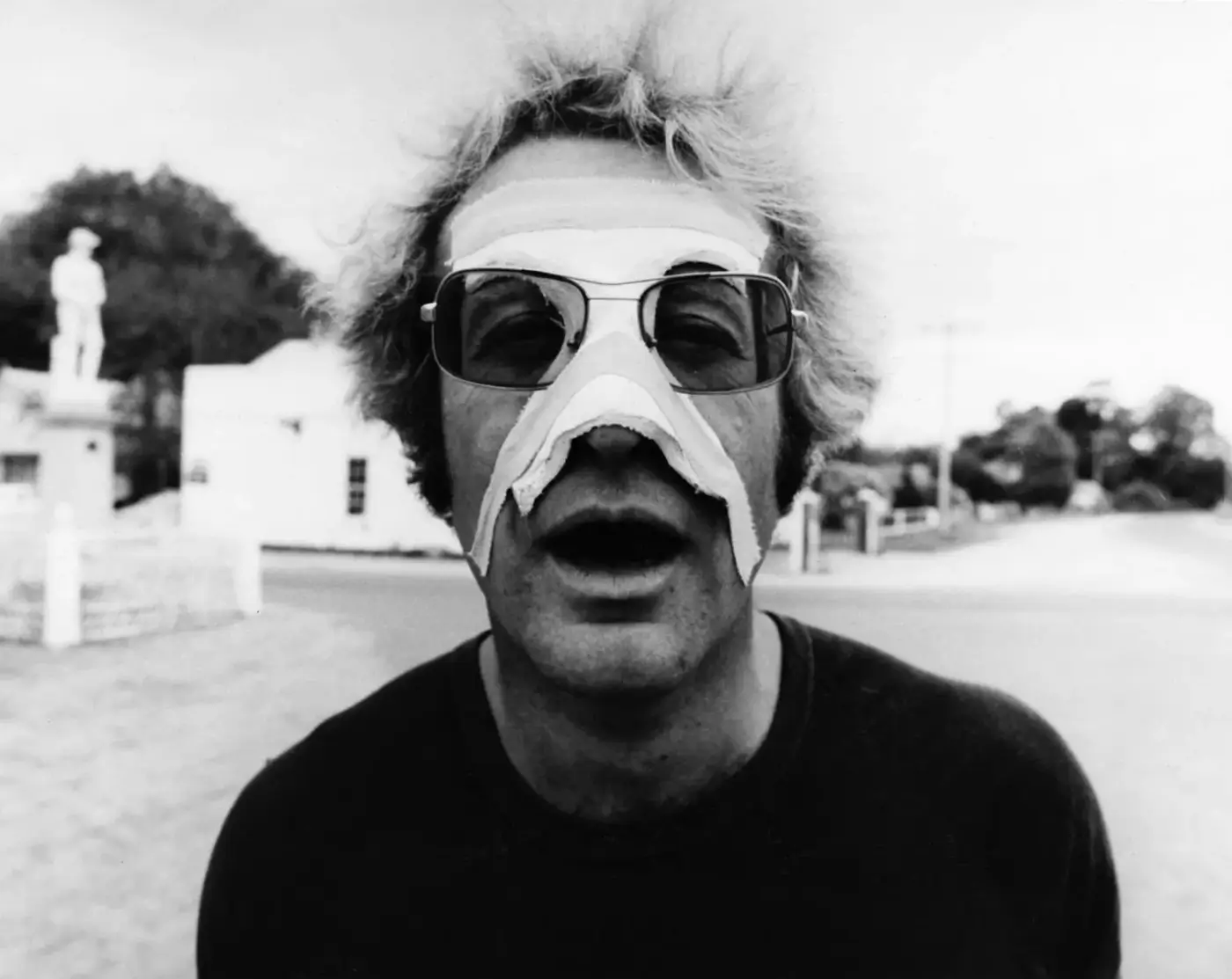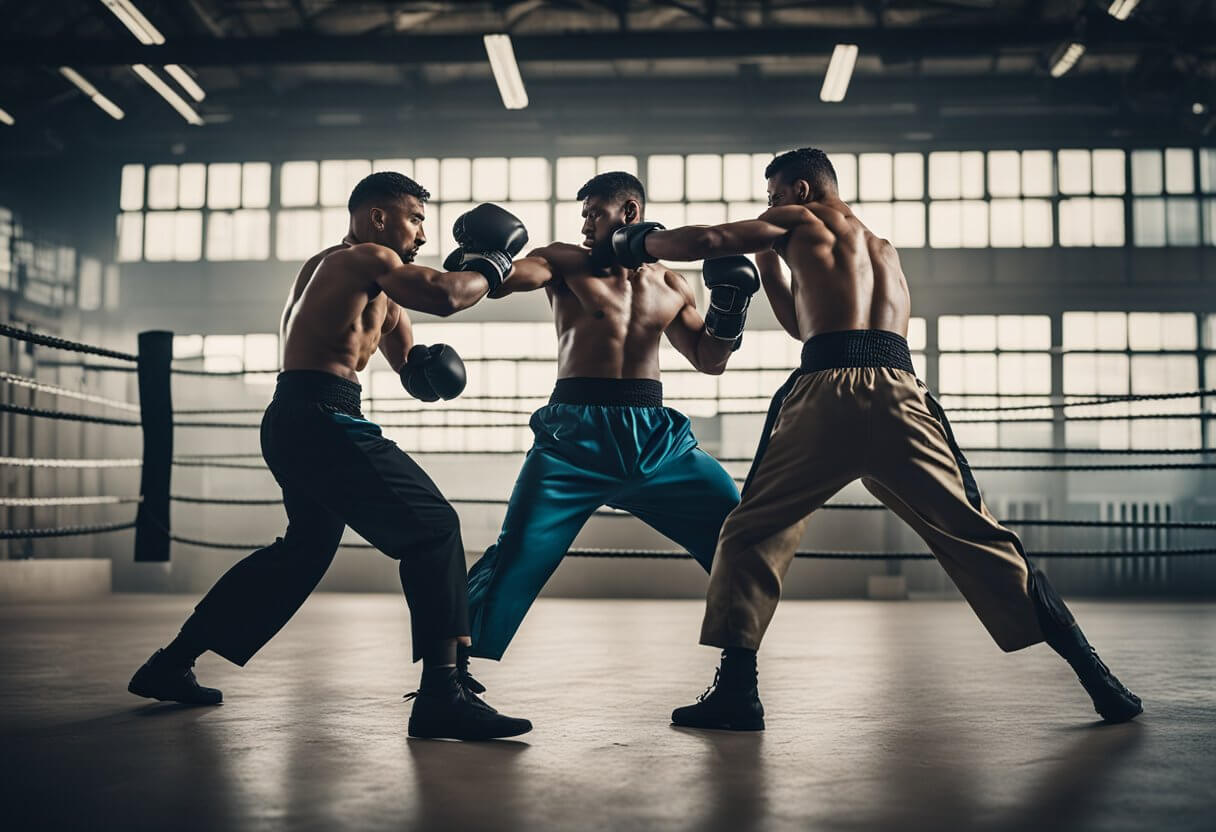Stunt Safety Essentials: 5 Key Guidelines for Risk Reduction
Stunt safety is a critical component of the entertainment industry, ensuring the well-being of the professionals performing high-risk actions for film, television, or live performances. As a viewer, you might marvel at the gravity-defying feats, but behind these thrilling scenes is a rigorous adherence to safety protocols and measures. It’s not just about the allure of danger; it’s about meticulous preparation and the application of expert knowledge to create the illusion of peril, while safeguarding those involved.

From the use of protective gear to detailed pre-stunt planning, a vast array of strategies are employed to minimize risks. Stunt performers undergo extensive training to master the physical and mental skills needed for their craft. Each stunt is methodically choreographed and rehearsed within a controlled environment, with clear communication among all team members being imperative. The application of this strategic approach to stunt execution allows for the creation of visually captivating moments that entertain audiences without compromising the safety of the professionals executing them.
Key Takeaways
- Proper stunt safety requires thorough preparation and specialized training.
- Communication and cooperation among crew members are indispensable during stunts.
- Ensuring the use of appropriate equipment is fundamental to stunt performer protection.
Fundamentals of Stunt Safety
Stunt work is a highly specialized field where safety is paramount. As you embark on performing or coordinating stunts, you need to have a firm grasp on the essential safety protocols and knowledge to mitigate risks.
Understanding Stunt Work
When engaging in stunt work, your safety hinges on understanding the complexities of the stunts you perform. First and foremost, you should be thoroughly familiar with the
stunt design and the expected
outcomes. It’s critical to assess and prepare for any risks associated with the stunt, ensuring that all
safety equipment is in place and tested. You must also have a solid
knowledge base that includes the mechanics of the stunt, the physical demands, and the potential hazards. This is not just about courage or ability but a comprehensive understanding of the safety measures that protect you and your team.
Role of a Stunt Coordinator
A
Stunt Coordinator plays a vital role in ensuring stunt safety on set. With responsibility for developing and implementing
safety protocols, the coordinator must be experienced and highly knowledgeable about all aspects of stunt work. They assess every stunt for risk, choose the most appropriate
safety gear, and coordinate rehearsals to ensure everyone knows their role and responsibilities. Their primary objective is to create a safe environment where stunts can be performed reliably and safely.
Training and Skills Development for Stunt Safety

In the realm of stunt safety, your training and skills development are crucial to ensuring performance without compromising on your safety. This training encompasses robust physical conditioning and a methodical approach to skill specialization and progression.
Physical Conditioning
To excel in stunts, you need to maintain
peak physical condition. This involves regular cardiovascular exercises to boost endurance, strength training to build the necessary muscle power, and flexibility routines to increase your range of motion. The
key components of your physical regimen should include:
- Cardiovascular Training: Aerobic exercises such as running, swimming, or cycling.
- Strength Training: Utilize both free weights and body weight exercises to build muscle.
- Flexibility: Incorporate yoga or dynamic stretching into your daily routine.
Skill Specialization and Progression
Developing your stunt skills requires focusing on specialized areas and gradually increasing the complexity of your stunts. Your learning should be structured, starting from fundamentals and advancing to more intricate techniques.
- Begin with the Basics: Master simple falls and rolls before progressing to complex acrobatics.
- Specialized Training: Focus on specific areas like high falls, fire stunts, or vehicle maneuvers.
- Incremental Learning: Increase stunt difficulty progressively to enhance capability while maintaining safety.
Safety Protocols and On-Set Communication

In stunt coordination, your safety hinges on rigorously established protocols and clear, effective communication systems. These are the cornerstones of minimizing risks during production.
Establishing Clear Protocols
You must have precise safety protocols in place before executing any stunts. These protocols should outline every aspect of the stunt, from the equipment used to the exact movement of performers and crew. For example, when an
Intimacy Coordinator is involved in scenes that require close contact, their role is to ensure that the protocols accommodate both safety and the artistic vision of the scene. Likewise, a designated coordinator should be present to supervise stunt safety, maintain clear communication, and ensure compliance with protocols.
Effective Communication Systems
An efficient communication system is vital for on-set safety during stunts. It’s crucial that you can quickly relay messages between departments and individuals. Equipment like walkie-talkies or headsets should be standard, as immediate communication can avoid accidents. If there’s an issue with a
stunt in progress, having a robust communication system ensures that all team members receive the information instantly and can react accordingly. Employing
cyber-physical systems can add an extra layer of security by monitoring and managing communication protocols and vulnerabilities, further ensuring a secure environment for stunt execution.
Equipment and Protective Gear

To ensure your safety during stunts, it is essential to equip yourself with the right personal protective equipment and stunt-specific safety gear. It’s not just about reducing the risk of injury; it’s about combining expertise with the right tools for maximum protection.
Personal Protective Equipment
Helmets: Central to your safety, helmets should be robust, fitting comfortably but securely on your head. Look for those that meet industry standards, such as the
Snell M2015 rating, to ensure they can withstand high impacts.
Protective Clothing: Material quality is vital. Leather or modern synthetics offer abrasion resistance, and reinforced designs protect critical areas. Reflective elements are a bonus for visibility.
Gloves and Boots: Your gloves and boots must be made for impact absorption. Reinforced knuckles and palms in gloves, and ankle protection in boots, provide that extra level of defense.
Stunt-Specific Safety Gear
Padding: Invest in specialized pads for knees, elbows, and back, designed for high impacts and offer joint protection without limiting your range of motion.
Safety Harnesses: For aerial stunts, use a safety harness that is tested for beyond expected stress levels. Comfort is necessary, but do not compromise on the tensile strength and integrity of the harness.
Remember, combining well-maintained
equipment with individual skills is the best approach to stunt safety. Your
protective gear is your personal line of defense that, when chosen correctly, affords confidence to perform at your best.
Planning and Executing Stunts

When planning and executing stunts, your focus must be on safety, precision, and communication. Every step, from the initial concept to the final performance, should be meticulously plotted to ensure the well-being of stunt performers and the success of the production.
Pre-Production Planning
In pre-production planning, you need to collaborate with directors, coordinators, and stunt performers to design stunt sequences that align with the creative vision while prioritizing safety. Here, risk assessments are conducted, and
stunt rehearsals are scheduled to prepare performers for the actual shoot.
- Risk Assessment: Evaluate potential hazards and prepare contingency plans.
- Storyboarding: Visually map out stunts to understand required actions and angles.
- Rehearsal Scheduling: Allocate adequate time for performers to practice and perfect stunts.
Spotting and Rigging Techniques
Spotting and rigging are critical for ensuring the safety of stunts involving heights, jumps, or falls. Your rigging set-up should be tested rigorously, and spotters must be trained to assist stunt performers.
- Rigging Equipment: Ensure all equipment like wires, harnesses, and pulleys meets industry standards.
- Spotters: Assign experienced personnel to observe and assist during stunt execution.
Real-Time Adaptations
Be prepared to make real-time adjustments during stunt execution. This flexibility can mean the difference between a successful take and an unplanned incident.
- Communication: Maintain clear and constant communication with your team.
- Adaptability: Be ready to modify stunts or equipment set-up in response to real-time feedback or unexpected changes on set.
Stunt Specializations
In the world of film and television, stunt specializations are critical for the realism and excitement of action sequences while ensuring the safety of everyone involved. From high-octane car chases to gravity-defying leaps, each type of stunt requires a unique set of skills and rigorous safety protocols.
Fights and Combat Choreography
Fight and combat choreography stunts involve a blend of precision and theatricality. You’ll see performers executing
martial arts,
sword play, and complex
fight sequences that look authentic yet are carefully planned to prevent injury. Professionals in this area often have backgrounds in martial arts,
parkour, or
tricking, which combines flips and twists with kicks and spins.
Vehicle and Driving Stunts
Stunts involving vehicles demand highly skilled
stunt drivers. These specialists perform daring maneuvers such as high-speed chases, crashes, and precision driving. They not only have to be expert drivers but also adept at understanding vehicle dynamics and safety measures to execute stunts like
jumps and 180-degree turns without harm.
High Falls and Acrobatics
Specializing in
high falls requires an expert understanding of body mechanics and safety rigging. Stunt performers in this category take falls from significant heights, often using
gymnastics techniques to land safely. Acrobatic stunts incorporate elements of
gymnastics and
parkour, with performers executing flips, rolls, and
jumps that require agility and spatial awareness.
Managing Risks and Accidents in Stunt Safety

In stunt safety, managing risks to prevent accidents and ensuring a prompt emergency response are critical to reducing injuries and mishaps.
Accident Prevention Strategies
Your primary focus should be on
Accident Prevention Strategies. This entails designing meticulous safety protocols and offering comprehensive training. Here’s how:
- Identify Potential Hazards: Before performing stunts, identify potential hazards related to the specific type of stunt, such as a motorcycle accident during a high-speed chase scene.
- Use of Protective Gear: Always wear appropriate safety equipment to mitigate the impact of collisions and falls.
- Safety Briefings: Regular briefings should be conducted to ensure that all team members are aware of potential risks and safety measures.
- Risk Assessments: Carry out detailed risk assessments for each stunt to prepare for any possible mishap effectively.
Through prevention strategies, you aim to minimize the likelihood of collisions and other stunt-related accidents that could lead to severe consequences or injuries.
Emergency Response and Aftercare
Should an accident occur, an effective
Emergency Response and Aftercare plan is vital in providing immediate medical attention and reducing the severity of injuries:
- Emergency Action Plan (EAP): Develop an EAP that includes immediate steps to take when an accident occurs. This should cover how to secure the area, provide first aid, and contact emergency services.
- Medical Personnel On-site: Have qualified medical personnel on stand-by during stunt performances.
- Post-Accident Evaluation: After any incident, conduct a thorough evaluation to understand what went wrong and how similar accidents can be prevented in the future.
Your goal is to ensure swift and efficient action in the aftermath of stunt-related mishaps to provide the best possible outcome for anyone injured.
Legal and Regulatory Considerations

In the world of stunt performance, you must navigate a complex landscape of regulations and ensure proper qualifications are met.
Industry Regulations and Compliance
Your adherence to
industry regulations is crucial for the safety and legality of stunt work. Regulatory bodies establish safety standards that you must follow to minimize risk on set. For example, the Occupational Safety and Health Administration (OSHA) provides guidelines that productions in the United States must comply with to ensure a safe working environment. Additionally, various
stunt-specific organizations contribute to safety protocols, which you must register with and adhere to. Each production may have its own set of compliance requirements that build upon these foundations to address unique risks associated with specific stunts.
Stunt Performer Qualifications
As a
stunt performer, your qualifications directly impact the safety and success of the stunts you execute. You typically need to register with relevant industry organizations, which may require proof of your skills and experience. This often means showing evidence of training, such as certifications in specific stunt techniques or courses in safety management. Being a registered stuntman demonstrates your commitment to professionalism and adherence to industry standards. It’s essential that you maintain and regularly update your qualifications to keep up with evolving industry regulations and safety practices.
Frequently Asked Questions

In the high-stakes realm of film and television, ensuring the well-being of stunt performers is paramount. This section addresses the critical safety measures and standards in place, giving you a closer look at the industry’s commitment to stunt safety.
What measures are taken to ensure the safety of stunt performers on set?
To protect stunt performers on set, meticulous planning, risk assessments, and the use of specialized safety equipment are standard practice. Coordinators collaborate with directors and performers to design
safe yet effective stunts, focusing on environmental conditions and emergency medical planning.
What certifications are required for a professional stunt performer?
A professional stunt performer typically needs certifications in various physical disciplines such as combat, driving, or diving. Completing professional stunt training programs and adhering to industry-specific certifications ensures a standardized level of skill and safety knowledge.
How does a stunt coordinator contribute to the safety of action sequences?
A stunt coordinator is crucial for
safety in action sequences, overseeing the planning, execution, and safety compliance. Their expertise in choreography and safety equipment usage minimizes risks for performers and crew members alike.
What kind of training do stunt performers undergo to prepare for complex stunts?
Stunt performers undergo rigorous training in various physical techniques and the proper execution of high-risk activities. This training is specific to the stunt required and may include fight choreography, wirework, or precision driving to prepare for
complex stunts.
Are there specific regulations that govern the execution of stunts in film and television?
Yes, there are specific regulations and industry guidelines that govern the execution of stunts in film and television. These rules mandate the use of safety gear, qualified personnel, and approval processes to ensure the
execution of stunts adheres to safety standards.
What safety equipment is commonly used during the filming of stunts?
During the filming of stunts, safety equipment such as harnesses, padding, helmets, and airbags are commonly used. This equipment is designed to reduce impact and prevent injury, providing a safer environment for the execution of high-risk stunts.
 From the use of protective gear to detailed pre-stunt planning, a vast array of strategies are employed to minimize risks. Stunt performers undergo extensive training to master the physical and mental skills needed for their craft. Each stunt is methodically choreographed and rehearsed within a controlled environment, with clear communication among all team members being imperative. The application of this strategic approach to stunt execution allows for the creation of visually captivating moments that entertain audiences without compromising the safety of the professionals executing them.
From the use of protective gear to detailed pre-stunt planning, a vast array of strategies are employed to minimize risks. Stunt performers undergo extensive training to master the physical and mental skills needed for their craft. Each stunt is methodically choreographed and rehearsed within a controlled environment, with clear communication among all team members being imperative. The application of this strategic approach to stunt execution allows for the creation of visually captivating moments that entertain audiences without compromising the safety of the professionals executing them.
 In the realm of stunt safety, your training and skills development are crucial to ensuring performance without compromising on your safety. This training encompasses robust physical conditioning and a methodical approach to skill specialization and progression.
In the realm of stunt safety, your training and skills development are crucial to ensuring performance without compromising on your safety. This training encompasses robust physical conditioning and a methodical approach to skill specialization and progression.
 In stunt coordination, your safety hinges on rigorously established protocols and clear, effective communication systems. These are the cornerstones of minimizing risks during production.
In stunt coordination, your safety hinges on rigorously established protocols and clear, effective communication systems. These are the cornerstones of minimizing risks during production.
 To ensure your safety during stunts, it is essential to equip yourself with the right personal protective equipment and stunt-specific safety gear. It’s not just about reducing the risk of injury; it’s about combining expertise with the right tools for maximum protection.
To ensure your safety during stunts, it is essential to equip yourself with the right personal protective equipment and stunt-specific safety gear. It’s not just about reducing the risk of injury; it’s about combining expertise with the right tools for maximum protection.
 When planning and executing stunts, your focus must be on safety, precision, and communication. Every step, from the initial concept to the final performance, should be meticulously plotted to ensure the well-being of stunt performers and the success of the production.
When planning and executing stunts, your focus must be on safety, precision, and communication. Every step, from the initial concept to the final performance, should be meticulously plotted to ensure the well-being of stunt performers and the success of the production.
 In stunt safety, managing risks to prevent accidents and ensuring a prompt emergency response are critical to reducing injuries and mishaps.
In stunt safety, managing risks to prevent accidents and ensuring a prompt emergency response are critical to reducing injuries and mishaps.
 In the world of stunt performance, you must navigate a complex landscape of regulations and ensure proper qualifications are met.
In the world of stunt performance, you must navigate a complex landscape of regulations and ensure proper qualifications are met.
 In the high-stakes realm of film and television, ensuring the well-being of stunt performers is paramount. This section addresses the critical safety measures and standards in place, giving you a closer look at the industry’s commitment to stunt safety.
In the high-stakes realm of film and television, ensuring the well-being of stunt performers is paramount. This section addresses the critical safety measures and standards in place, giving you a closer look at the industry’s commitment to stunt safety.




